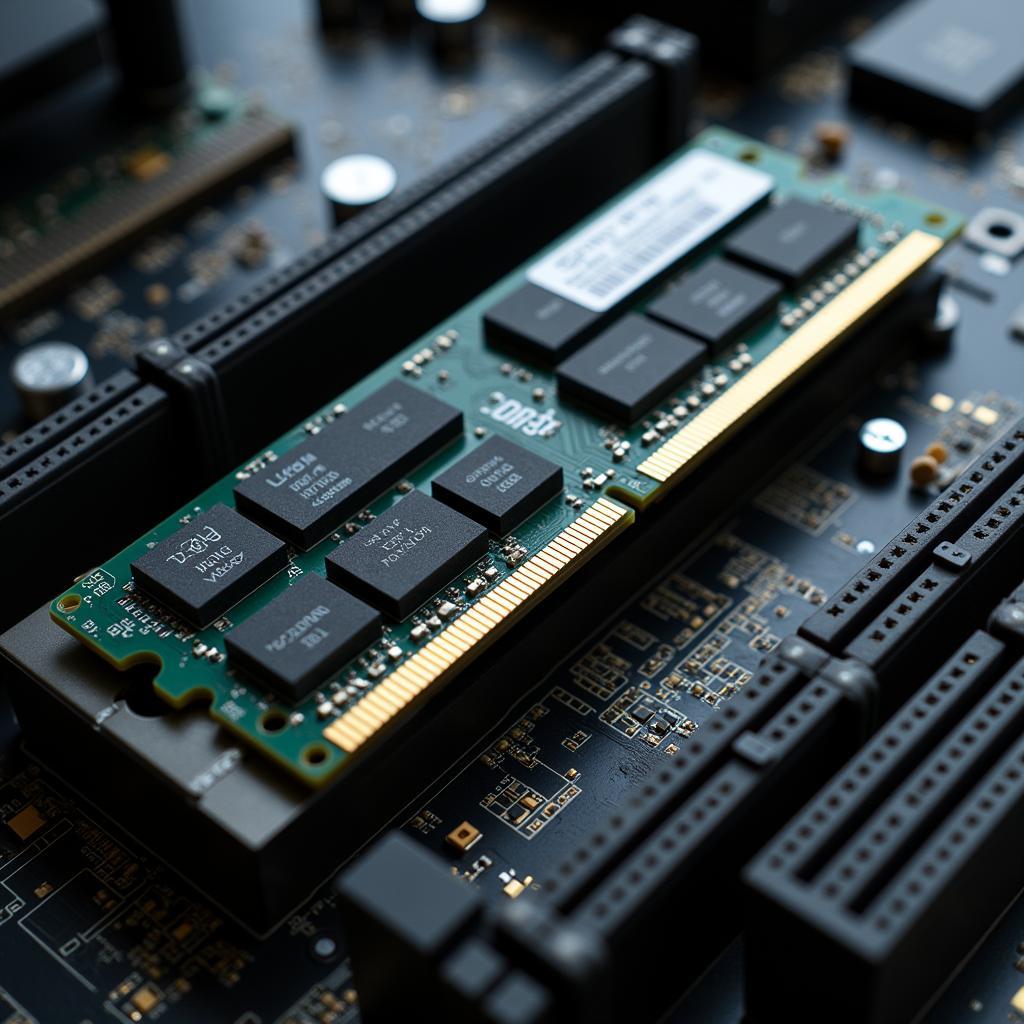DDR3 1333: A Comprehensive Guide to Understanding this RAM Standard
October 29, 2024Ddr3 1333 is a type of dynamic random-access memory (DRAM) that was once a staple in the world of computing. While newer generations of RAM have since taken over, DDR3 1333 still holds relevance, particularly for older systems or specific use cases. This guide aims to provide a thorough understanding of DDR3 1333, covering its technical specifications, advantages, limitations, and more.
What is DDR3 1333 RAM?
DDR3 1333 belongs to the third generation of Double Data Rate (DDR) Synchronous Dynamic Random-Access Memory (SDRAM). The “1333” in its name refers to its data transfer rate, which is 1333 MT/s (MegaTransfers per second). This effectively means it can transfer data at a speed of 1333 million times per second.
Compared to its predecessor, DDR2, DDR3 1333 brought significant improvements in terms of speed and power efficiency. This made it a popular choice for computers in the late 2000s and early 2010s.
Technical Specifications of DDR3 1333
Understanding the technical details of DDR3 1333 can be helpful, especially when comparing it to other types of RAM:
- Data Transfer Rate: 1333 MT/s
- Clock Speed: 667 MHz (Double Data Rate effectively doubles this)
- Voltage: 1.5V (lower than DDR2, contributing to better energy efficiency)
- Latency: Typically ranges from CL7 to CL9. Lower latency generally indicates better performance.
- Form Factor: Primarily available as 240-pin DIMMs (Dual In-Line Memory Modules) for desktop computers and 204-pin SO-DIMMs (Small Outline DIMMs) for laptops.
Advantages of Using DDR3 1333 RAM
While not the fastest RAM available today, DDR3 1333 still offers several advantages:
- Cost-Effective: As an older generation, DDR3 1333 is often available at significantly lower prices compared to newer RAM like DDR4 or DDR5.
- Suitable for Older Systems: Many older computers, particularly those manufactured before 2014, are only compatible with DDR3 RAM.
- Sufficient for Basic Tasks: For everyday tasks like web browsing, word processing, or light multimedia consumption, DDR3 1333 can still provide a smooth experience.
 DDR3 1333 RAM installed in a desktop computer motherboard.
DDR3 1333 RAM installed in a desktop computer motherboard.
Limitations of DDR3 1333 RAM
It’s essential to be aware of the limitations of DDR3 1333, especially considering the advancements in RAM technology:
- Lower Performance Compared to Newer Generations: DDR4 and DDR5 offer significantly higher data transfer rates and lower latency, leading to substantial performance improvements, especially in demanding applications.
- Limited Availability: As newer RAM generations dominate the market, finding DDR3 1333 can be challenging, and the available options might be limited.
- Compatibility Issues: It’s crucial to ensure your motherboard supports DDR3 1333 RAM before purchasing. Modern motherboards are generally not compatible with DDR3.
Applications Where DDR3 1333 Remains Relevant
- Upgrading Older Systems: For users looking to breathe new life into older computers still utilizing DDR3, upgrading to a higher capacity of DDR3 1333 can be a budget-friendly way to boost performance.
- Specific Use Cases: In some cases, like embedded systems or industrial applications where the latest RAM technologies are not essential, DDR3 1333 can be a cost-effective solution.
FAQs about DDR3 1333 RAM
1. Can I use DDR3 1333 RAM with a DDR4 motherboard?
No, DDR3 and DDR4 RAM modules have different notch positions and pin configurations, making them incompatible with each other.
2. How much DDR3 1333 RAM do I need?
For basic tasks, 4GB can suffice, but 8GB or more is recommended for smoother multitasking and a better experience with demanding applications.
3. Can I mix different brands of DDR3 1333 RAM?
While it’s generally advisable to use RAM modules from the same brand and model for optimal compatibility, mixing different brands can work in some cases. However, it’s crucial to ensure the RAM modules have the same specifications (speed, timings, voltage).
4. What is the difference between DDR3 and DDR3L?
DDR3L operates at a lower voltage (1.35V) compared to standard DDR3 (1.5V), making it more energy-efficient.
5. Where can I buy DDR3 1333 RAM?
You can find DDR3 1333 RAM from online retailers like Amazon and Newegg, as well as from some local computer stores that specialize in older hardware.
 Performance comparison chart between DDR3 1333 and newer RAM generations.
Performance comparison chart between DDR3 1333 and newer RAM generations.
Conclusion
DDR3 1333, though succeeded by faster and more efficient RAM generations, continues to hold its ground in specific situations. Its affordability and compatibility with older systems make it a viable option for budget upgrades or specialized use cases. However, for users looking for the best possible performance in modern applications, opting for DDR4 or DDR5 RAM is highly recommended.
Need assistance?
Contact us:
Phone Number: 0915117113
Email: [email protected]
Address: To 3 Kp Binh An, Phu Thuong, Viet Nam, Binh Phuoc 830000, Viet Nam.
We have a 24/7 customer support team.